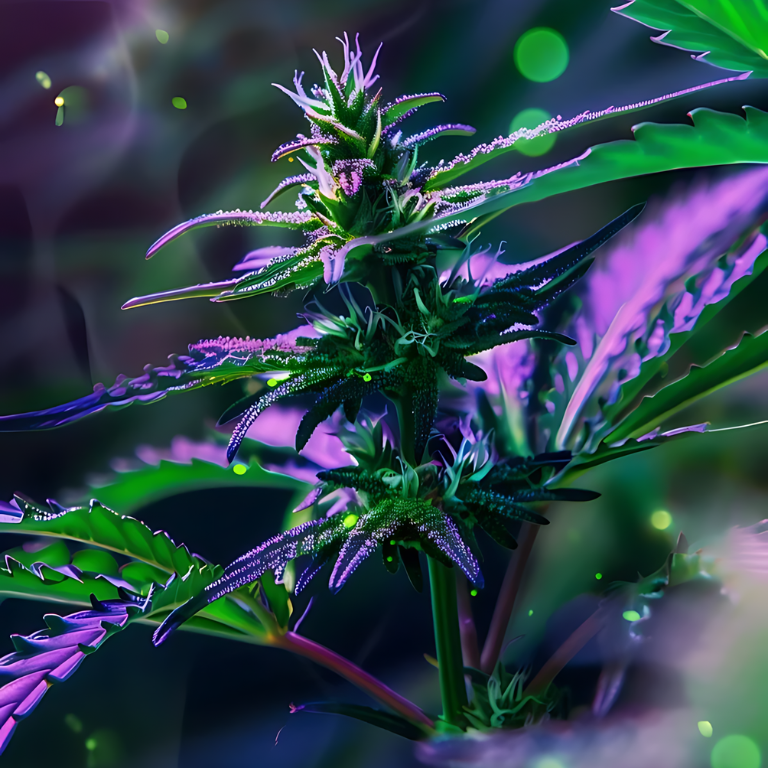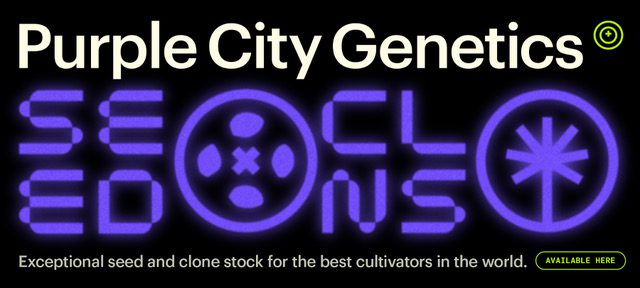Seeds or Clones? Understanding Your Cannabis Growing Options

The decision between growing cannabis from seeds or clones is one of the most critical choices a cultivator must make. Each method offers distinct advantages and challenges, which can significantly impact the growth process, final yield, and overall quality of the cannabis plants. Whether you’re a beginner grower or a seasoned cultivator, understanding the differences between seeds and clones, and knowing how to choose the right option for your specific needs, is essential for a successful harvest.
This comprehensive guide will explore the intricacies of growing cannabis from seeds and clones, highlighting their respective benefits and drawbacks, as well as providing expert tips on how to maximize the potential of each method.
The Basics of Cannabis Cultivation
Before diving into the comparison between seeds and clones, it’s important to understand the fundamental principles of cannabis cultivation. Cannabis is a dioecious plant, meaning it has distinct male and female plants. Female plants are prized for their flowers, which contain the highest concentrations of cannabinoids like THC and CBD. Male plants, on the other hand, produce pollen and are primarily used for breeding purposes.
Growing Cannabis from Seeds
Cannabis seeds are the starting point of all cannabis plants. They contain the genetic blueprint for the plant, including its growth patterns, cannabinoid profile, and potential yield. Seeds come in various types, including regular, feminized, and auto-flowering, each with unique characteristics that influence the cultivation process.
Types of Cannabis Seeds
Regular Seeds: These seeds can produce either male or female plants. Growers must identify and remove male plants to prevent pollination, which can lead to seed production rather than flower development.
Feminized Seeds: These seeds are genetically modified to produce only female plants, ensuring that all plants in the grow area will produce buds. Feminized seeds are popular among growers who want to maximize their yield without worrying about male plants.
Autoflowering Seeds: These seeds are bred to flower automatically after a certain period, regardless of the light cycle. Auto-flowering seeds are ideal for growers looking for a quicker harvest or those with limited control over light exposure.
Advantages of Growing from Seeds
Genetic Diversity: Growing from seeds offers a wide range of genetic variation, allowing growers to select strains that suit their specific needs, whether for flavor, potency, or medicinal properties.
Stronger Root System: Plants grown from seeds typically develop a stronger and more extensive root system compared to clones. This robust root structure can lead to healthier plants and potentially higher yields.
Disease Resistance: Seeds produce plants with a natural resistance to diseases and pests, which can be particularly beneficial in outdoor grows where environmental factors are less controllable.
Longevity: Plants grown from seeds can produce multiple harvests, especially if they are kept in the vegetative stage for extended periods.
Disadvantages of Growing from Seeds
Time-Consuming: Growing from seeds takes longer, as it includes the germination phase, where seeds are coaxed into sprouting. This process can add several weeks to the overall cultivation timeline.
Unpredictability: Since regular seeds can produce male plants, there is an element of unpredictability. Even with feminized seeds, there is a small chance of hermaphroditism, where a plant develops both male and female flowers.
Varying Phenotypes: Seeds can produce plants with different phenotypes, leading to variations in size, shape, and cannabinoid content. This can be challenging for growers seeking uniformity in their crop.
Step-by-Step Guide to Growing from Seeds
Germination: Start by soaking the seeds in water for 12-24 hours, then place them in a damp paper towel inside a plastic bag or between two plates. Keep the seeds in a warm, dark place until they sprout.
Planting: Once the seeds have sprouted, plant them in small pots filled with a light, well-draining soil mix. Keep the soil moist but not waterlogged.
Seedling Stage: As the seedlings emerge, provide them with plenty of light and keep the temperature between 70-80°F. This stage lasts about 2-3 weeks.
Vegetative Stage: During this stage, the plants will focus on developing leaves and stems. Increase the light exposure to 18-24 hours per day and feed the plants with a nutrient-rich solution.
Flowering Stage: When you’re ready to flower the plants, reduce the light cycle to 12 hours on and 12 hours off. This will trigger the plants to start producing buds. Monitor the plants for any signs of stress or disease.
Harvest: After 8-12 weeks of flowering, the buds should be mature and ready for harvest. Trim the buds carefully and dry them in a cool, dark place to preserve potency and flavor.
Growing Cannabis from Clones
Clones are cuttings taken from a mature cannabis plant, also known as a “mother plant.” These cuttings are genetically identical to the mother plant, meaning they will produce plants with the same characteristics, such as cannabinoid content, growth pattern, and yield potential.
Advantages of Growing from Clones
Consistency: Since clones are genetically identical to the mother plant, they offer consistent growth patterns and cannabinoid profiles. This is particularly advantageous for commercial growers who require uniformity in their crops.
Faster Growth: Clones skip the germination and early seedling stages, allowing them to establish roots and enter the vegetative stage more quickly than seeds. This can shorten the overall cultivation time by several weeks.
Predictability: With clones, there’s no risk of growing male plants, which eliminates the need to monitor and remove males from the grow area. This predictability is crucial for growers focused on maximizing bud production.
Cost-Effective: While the initial investment in a mother plant may be higher, clones can be propagated indefinitely from the same plant, making it a cost-effective option in the long run.
Disadvantages of Growing from Clones
Limited Genetic Diversity: Clones lack the genetic diversity found in seeds, which can be a disadvantage if you’re looking to experiment with different strains or if the mother plant has any genetic weaknesses.
Weaker Root System: Clones tend to develop weaker root systems compared to seed-grown plants. This can result in less vigorous growth and potentially lower yields.
Higher Risk of Disease: Clones are more susceptible to diseases, pests, and environmental stressors, particularly if the mother plant has any underlying issues.
Dependency on Mother Plant: The health and viability of clones depend entirely on the mother plant. If the mother plant becomes diseased or stressed, the quality of the clones will suffer.
Step-by-Step Guide to Growing from Clones
Selecting a Mother Plant: Choose a healthy, robust mother plant that exhibits the traits you desire in your clones. The mother plant should be free from pests, diseases, and nutrient deficiencies.
Taking Cuttings: Use sterilized scissors or a razor blade to take cuttings from the lower branches of the mother plant. Each cutting should be 4-6 inches long and include at least one node (the point where leaves attach to the stem).
Preparing the Cuttings: Remove the lower leaves from the cutting, leaving a few at the top. Dip the cut end in rooting hormone to encourage root development.
Planting the Cuttings: Place the cuttings in a rooting medium, such as rockwool cubes or a soilless mix. Keep the medium moist and maintain high humidity levels by covering the cuttings with a plastic dome or placing them in a humidity-controlled environment.
Rooting Stage: Keep the cuttings under low-intensity light (such as fluorescent lights) and maintain temperatures between 70-80°F. After 1-2 weeks, the cuttings should begin to develop roots.
Transplanting: Once the roots are established, transplant the clones into larger pots with a nutrient-rich soil mix. Gradually acclimate the clones to stronger light and adjust the watering schedule as needed.
Vegetative Stage: Treat the clones as you would seedlings, providing ample light and nutrients to encourage vigorous growth. The clones will quickly establish themselves and begin producing new leaves and branches.
Flowering Stage and Harvest: When you’re ready to flower the clones, reduce the light cycle to 12 hours on and 12 hours off. Monitor the plants closely and harvest the buds when they reach full maturity.
Choosing Between Seeds and Clones
Deciding whether to grow cannabis from seeds or clones ultimately depends on your specific goals, resources, and experience level. Here are some factors to consider when making your decision:
Genetic Diversity vs. Consistency: If you value genetic diversity and want to experiment with different strains, growing from seeds may be the better option. However, if you require consistency in your crop, clones are the way to go.
Time and Effort: Growing from seeds requires more time and effort, particularly during the germination and seedling stages. Clones, on the other hand, offer a quicker start and can reduce the overall cultivation time.
Cost: While seeds may be less expensive upfront, clones can be more cost-effective in the long run, especially if you plan to propagate multiple plants from the same mother.
Risk Tolerance: Seeds carry the risk of producing male plants, which can be problematic if you’re focused on bud production. Clones eliminate this risk but may carry a higher risk of disease and environmental stress.
Experience Level: Beginners may find growing from seeds more straightforward, as it allows for more flexibility and resilience in the plants. Clones, however, may be more suitable for experienced growers who can manage the specific needs and challenges of cloned plants.
Expert Tips for Maximizing Success with Seeds and Clones
Regardless of whether you choose seeds or clones, following these expert tips can help you achieve the best possible results:
Start with High-Quality Genetics: Whether you’re buying seeds or selecting a mother plant for cloning, always start with high-quality genetics from reputable sources. The success of your grow largely depends on the quality of the starting material.
Monitor the Environment: Both seeds and clones require a stable environment to thrive. Maintain consistent temperature, humidity, and light levels throughout the growth cycle to prevent stress and promote healthy development.
Keep a Clean Grow Space: Cleanliness is crucial in cannabis cultivation, especially when working with clones. Regularly disinfect your tools and grow space to prevent the spread of pests and diseases.
Use Proper Nutrients: Provide your plants with the right nutrients at each stage of growth. Seedlings and clones have different nutrient needs compared to mature plants, so adjust your feeding schedule accordingly.
Be Patient: Growing cannabis, whether from seeds or clones, requires patience and attention to detail. Don’t rush the process, and take the time to monitor your plants closely at each stage of growth.
Seeds vs. Clones – The Final Verdict
In the debate between seeds and clones, there is no one-size-fits-all answer. Each method has its own set of advantages and challenges, and the best choice depends on your specific circumstances and goals as a grower. Seeds offer genetic diversity and the potential for strong, resilient plants, while clones provide consistency, predictability, and a quicker start to the cultivation process.
By understanding the nuances of both methods and considering your own preferences, you can make an informed decision that aligns with your growing objectives. Whether you opt for the traditional route of seeds or the efficiency of clones, the key to success lies in careful planning, diligent care, and a deep respect for the cannabis plant.











